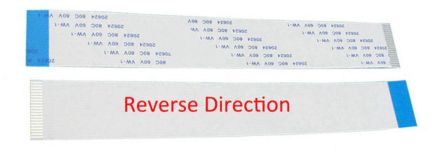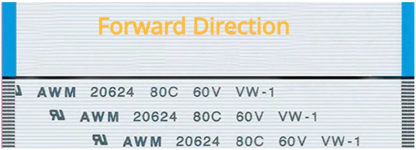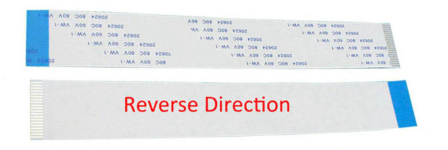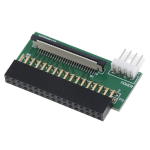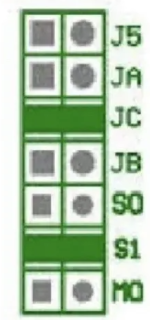For the first method, you will need the following:
A 26-position 1.25 mm to 1.00 mm FPC cable
A 26-position 1.00 mm FFC extension board
A 26-position 1.00 mm length of reverse direction FFC cable
A generic 34-pin to 26-position floppy adapter
To interface a GoTek Floppy Emulator with FlashFloppy or a typical desktop floppy drive the first step is to use a 26-position 1.25 mm to 1.00 mm FPC cable to interface with the floppy interface on the motherboard. It looks like this:
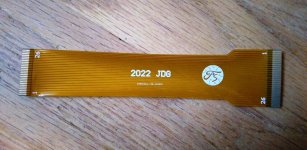
With this we encounter our first issue. The side the contacts are on for the 1.00 mm side are the opposite of what will be found on any typical 34-pin to 26-pin floppy adapter. This requires we use an additional piece of hardware to connect the interface. Normally this piece of hardware acts as a 26-position FFC Extension board, but we will instead be using it as a directional switcher, so we can orient the contacts on the side we need to interface with the 34-pin to 26-position adapter. This extender looks like this:
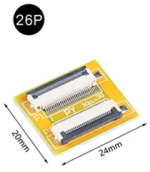
Most of the 26 pin extenders you will find are 30-pin boards with a 26-pin header attached to them like this one. That is normal. To this we attach a 26-position reverse direction FFC cable. You can use whatever length works best for you:

This will allow us to switch which side of the FFC the contacts are on. To this we attach the generic 34-pin to 26-position adapter, which typically look like this:

This can then be used to attach a typical desktop floppy drive or a GoTek Floppy Emulator with FlashFloppy.
If you are going to use a GoTek Floppy Emulator with FlashFloppy, I suggest you setup the jumper block to look like this:
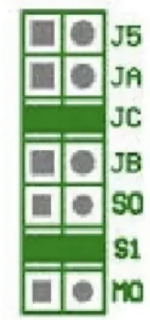
You will want a jumper on S1 & JC only. In the USB drive you are using with the GoTek you will want to make sure not to have an FF.CFG or IMG.CFG files in the root of the drive. You can just put the floppy images in the USB drive root and select them as needed.
The difficulty with this setup is going to be the first cable. It is a custom designed cable made by our very own Acadiel:
They are difficult to come by and if you want to make your own, typically it will run you $100+. Rarely you can find them for sale on eBay or here, but it is a rarity. As mentioned in the thread above you can download the complete files for the adapter from the GitHub that Acadiel has kindly setup:
26 pin Floppy FFC cable to adapt 1.25mm to 1.00mm. Contribute to hexbus/FFC_Floppy_Cable_Adapter development by creating an account on GitHub.

github.com
There is a second method, which I will document in my next post, and is typically going to be easier for most people, and involves less pieces, but it is only an option for people that are able to solder, or are willing to pay for someone to do it.

